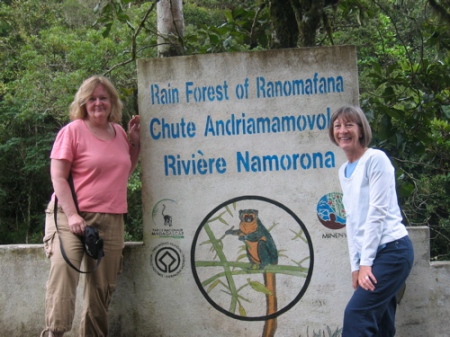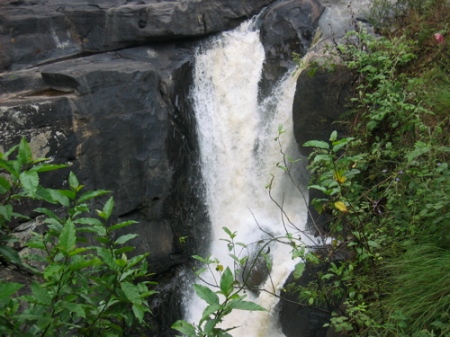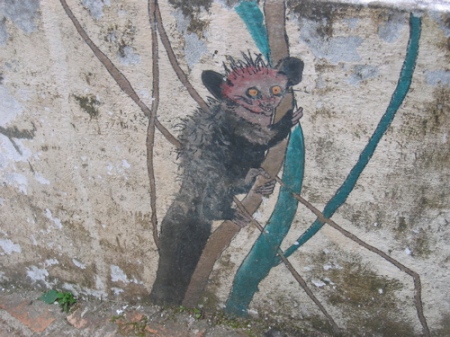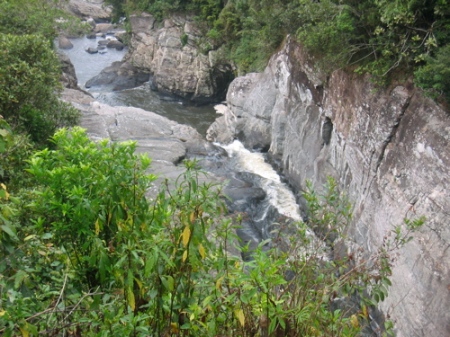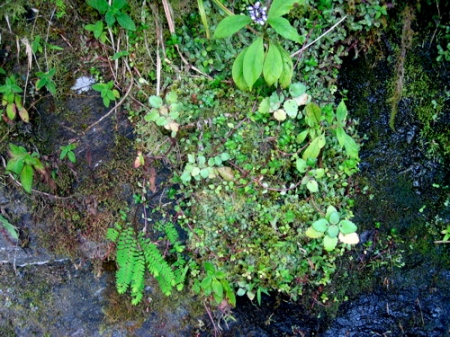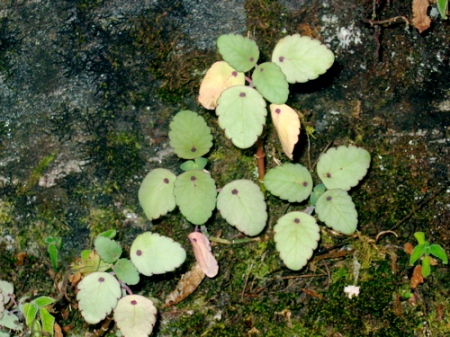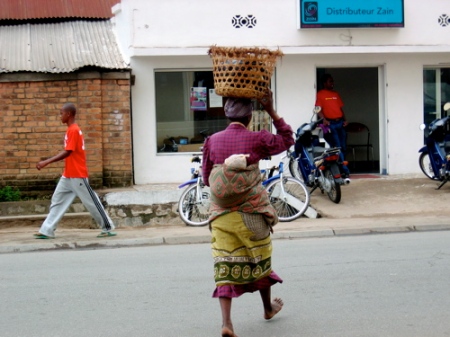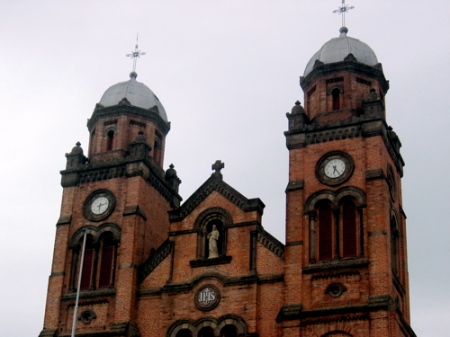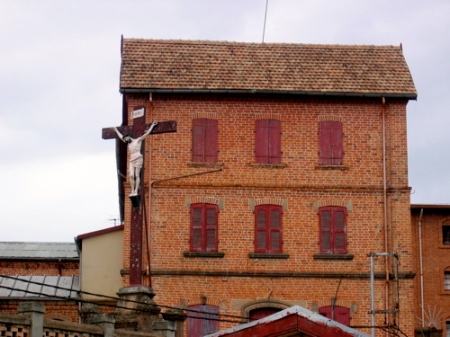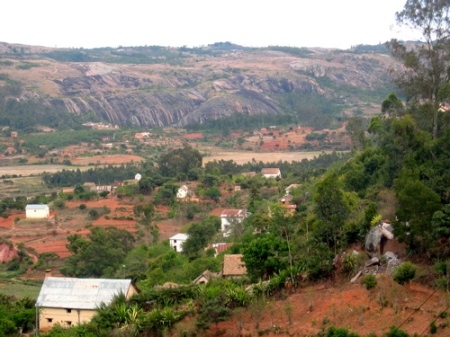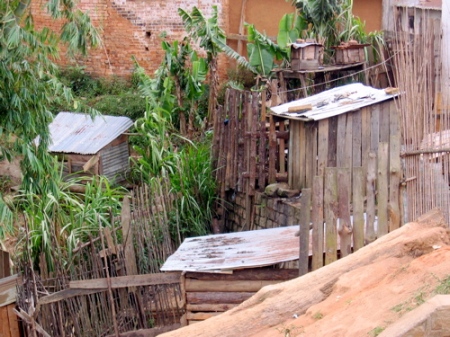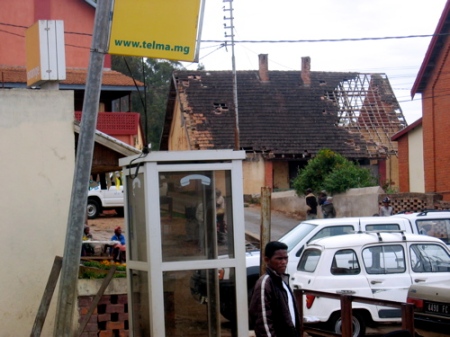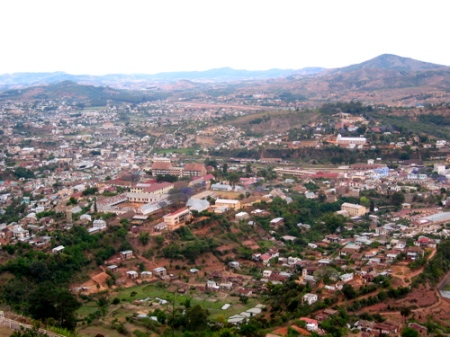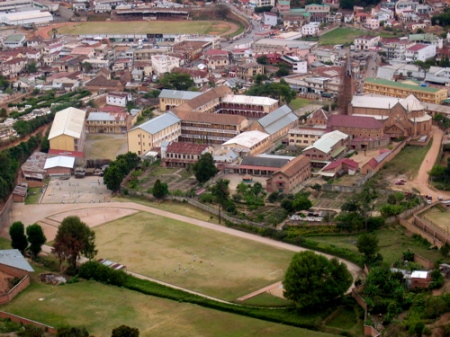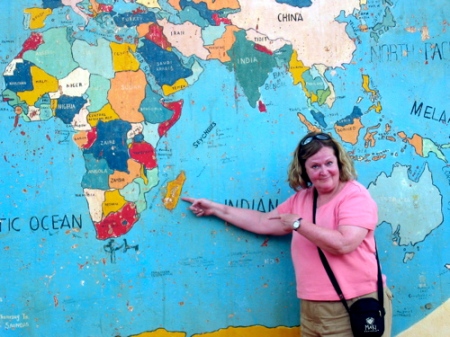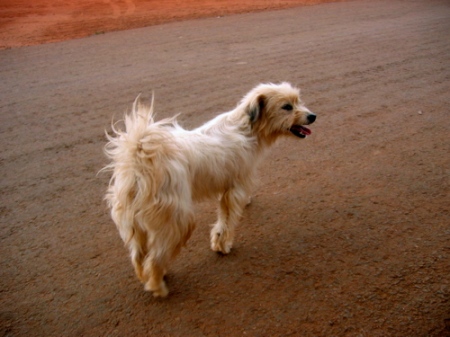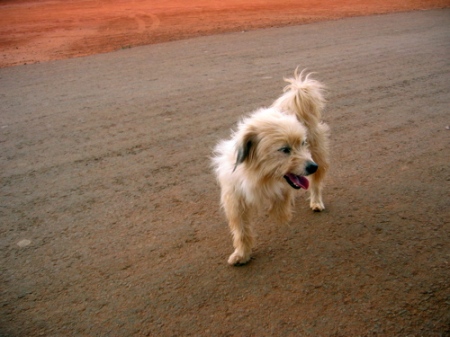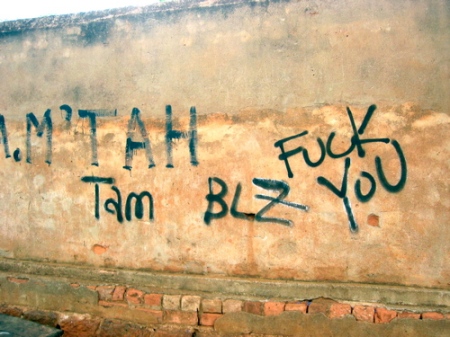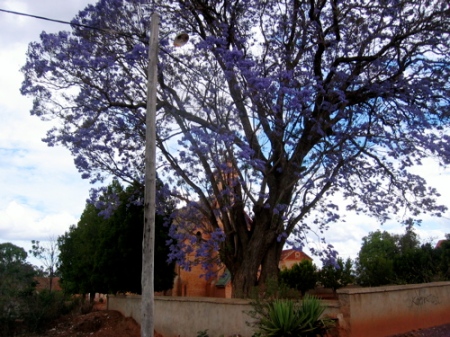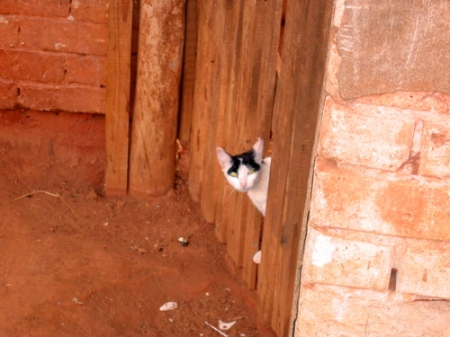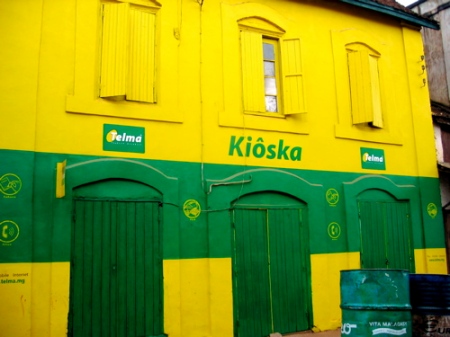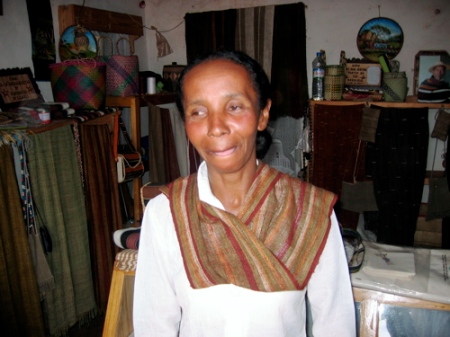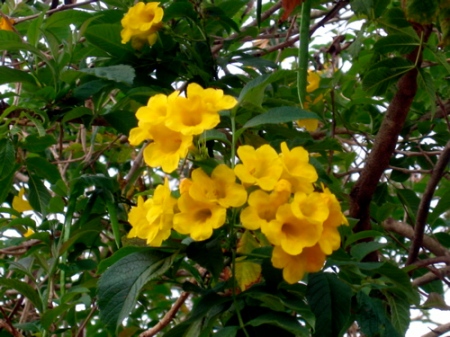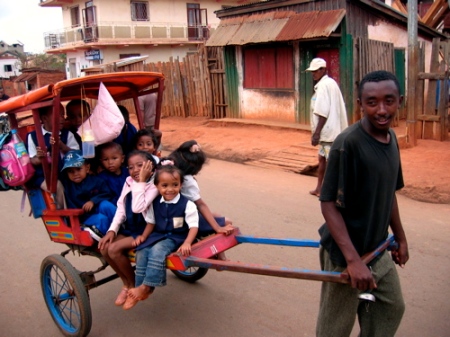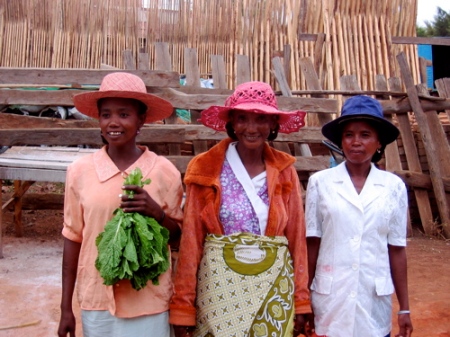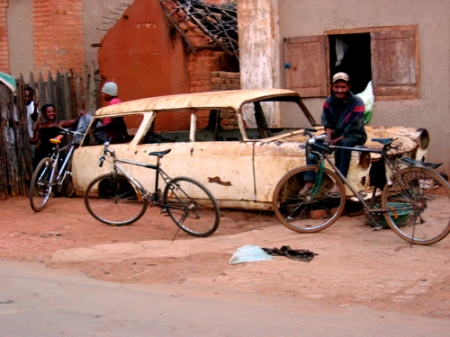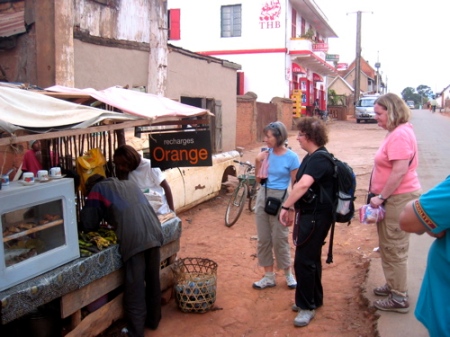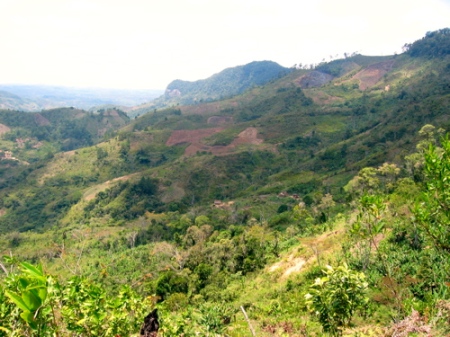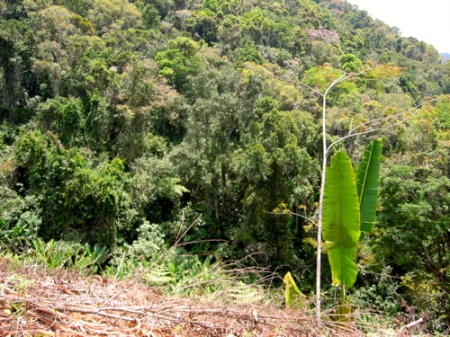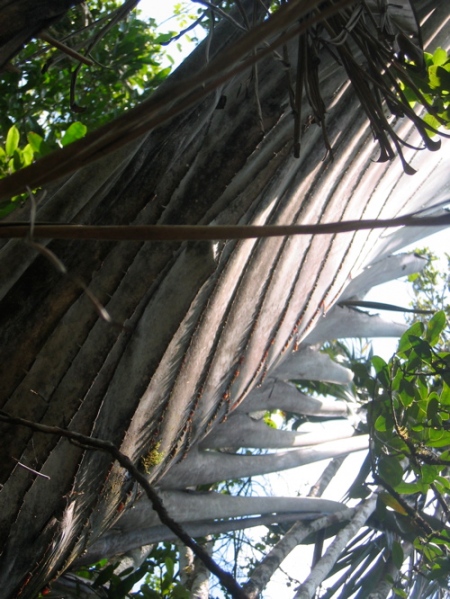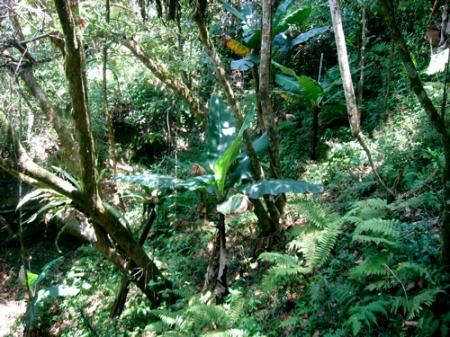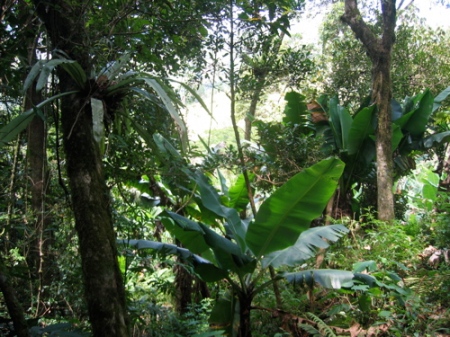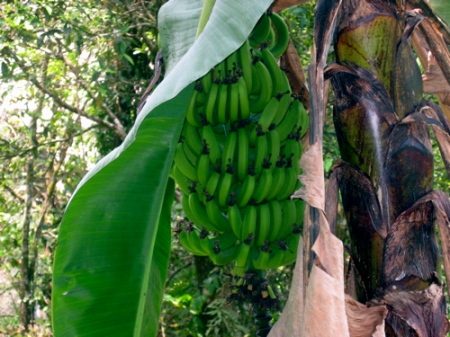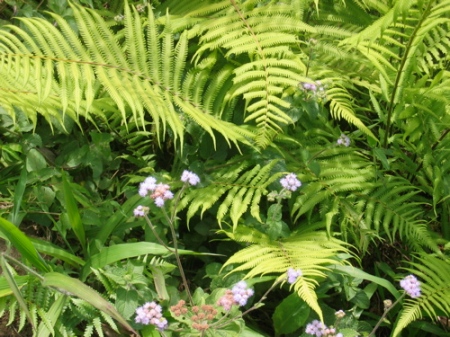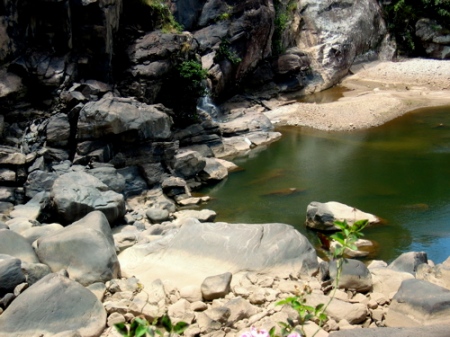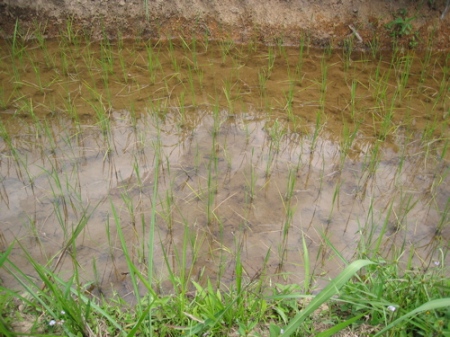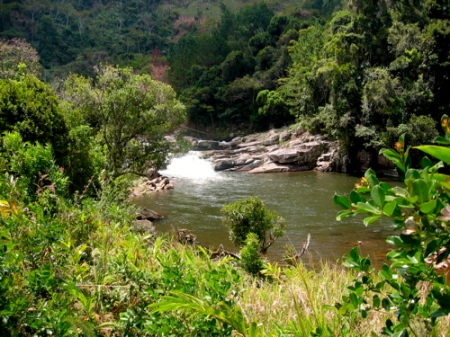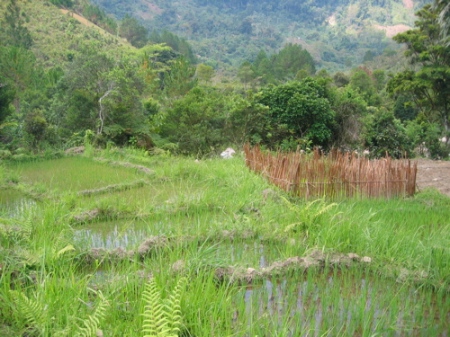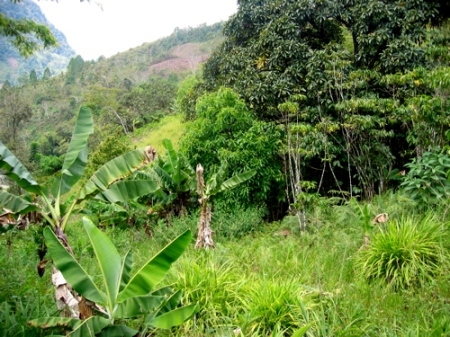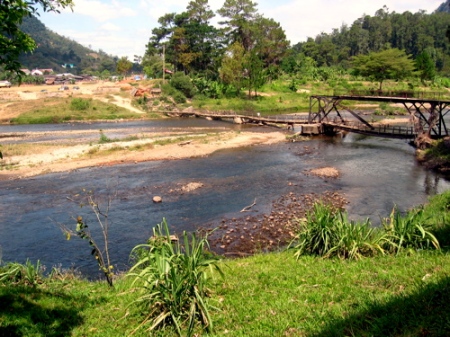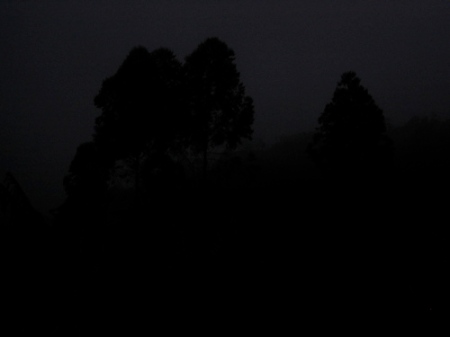We woke up bright and shiny as usual in order to make all stops in a timely fashion. When I went outside, the praying mantis, or Tanya II as I had named it, was still there, as was a giant stick insect. When I approached Tanya II, it stared at me in the way only praying mantises can (and if you’ve ever been up close to a praying mantis you know exactly what I’m talking about) before taking flight and landing yards away on a fruit tree. Bummed out that Tanya II had dismissed my attention, I went back inside to get my luggage and make the hideous trek down the steps to breakfast.
After dumping my bag on the pile by the bus, I ate the regular baguette with jam and guzzled some extra-strong coffee – we were about to be off. As we all dragged ourselves onto the bus, Fano told us we were going to be stopping by a sacred waterfall.
We drove up the the long and winding road past the park and then pulled over. The waterfall was gorgeous, as was the surrounding area. It was amazing to me the things you could see by just looking at the rock out of which the road had been carved. Ferns, lichens, mosses, insects, spiders, frogs – they all resided there in their own micro-ecosystems. Beautiful.
We all got back on the bus and Fano told us we’d be stopping in Fianarantsoa to do various businesses such as getting / exchanging cash, going to the post office, logging onto the internet, getting water, or whatever.
Fianarantsoa means “Place of Good Learning.” It is, according to Fano, the “intellectual hub” of Madagascar, and at one point, there was talk of turning it into the capital of Madagascar. That has yet to happen.When we arrived, Jill, Flavia, Christine, and I decided we were going to perambulate the town in order to find the post office. “Oh, that’s easy, just go up this road,” we were told. We walked, and we walked, and we WALKED, but be never came across a post office.
What we did come across was children, all of whom were selling “cards we made in school,” as they told Flavia, who spoke pretty much any language in the known universe. These children were all rushing around with cards that had lemurs on them. They claimed to have made them themselves. They traveled in groups of two or three, and each child had cards with different illustrations on them. However, as we moved from one pack of beggars to another, I noticed that the cards were all the same, so either these kids were all working off a template, or they were all lying. Either way, they were harmless, and at least they were polite. None of us purchased any cards.
After our abortive attempt at finding a post office, we stopped at a hotely where I found some of the fabled Malagasy chocolate I had read about. From the Bradt Guide: “If you’re a chocoholic, you’ll be happy to learn about Madagascar’s award-winning chocolate. The very best chocolate is for export only, so if you’ve bought this book in the fond hope that one day you’ll get to Madagascar you can get a taste of the country by buying the Mora Mora or Sambirano chocolate bars online from www.malagasy.co.uk. When in the country, look out for Chocolate Robert. It’s excellent!”
I bought a bar of 47% cacao de Madagascar Robert dark chocolate (vegan) and let me tell you what – that was the BEST chocolate I have had, EVER. I passed it around to people on the bus and they all agreed – this business was good.
We drove up the hill to an overlook and more children tried to dump those cards off on us – it seemed no matter where we stopped – even in the most desolate of places – there were children there, lying in wait to beg or try to sell us something. After this scenic overlook of the city, we drove back down into Fianarantsoa and stopped at the post office – which turned out to be a man at a folding table with a wooden box that had stamps and filthy money in it. We purchased the postage needed to send postcards (about $2, those stamps cost) and then got back on the bus – we were heading for Ambalavao, which promised tours of a winery and a paper factory and a zebu horn factory – all of which sounded revolting and / or boring to me, especially the zebu horn factory.
We got to Ambalavao around mid-afternoon and arrived at our gorgeous hotel where we lazed about for a bit before we were supposed to go on the winery tour. Allison and Mary and I decided against the wine tour, and we headed into town for a little tour of our own. We hadn’t gotten very far when a small dog that looked sort of like Benji came up to us. It was super friendly and actually guided us through the town, past the school, around the bend and back toward all of the shops. The dog would lead, turn around to see that we were still there, and then go on forward.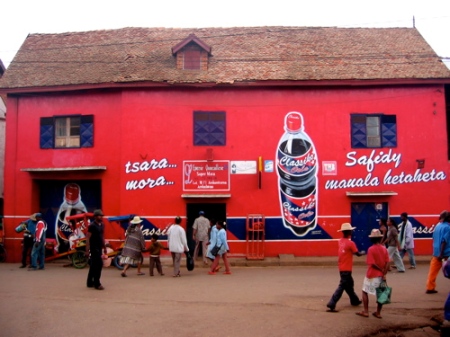
Classiko Cola - a division of Tiko, a dairy / beverage giant owned by Madagascar's President. Tastes just like Coke, y'all.
Allison, Mary and I rounded a corner into what appeared to be the main strip in town. Lots of shops lined the road and carried all sorts of things, from clothes to weird candies to Malagasy arts. We stopped in one Malagasy Artisan shop and a little woman got up from a loom to greet us. I managed to drag some French out of the catacombs of my brain to discuss prices with her while Allison tried on different scarves. We both bought one and then took some pictures of her before going on our way.
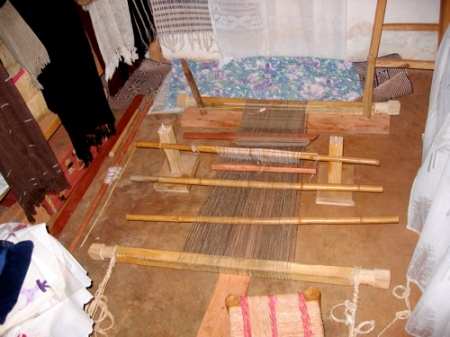
Loom in the Artisan Malagasy shop from which Ms. Mina - the caretaker of Nizzles - received a scarf.
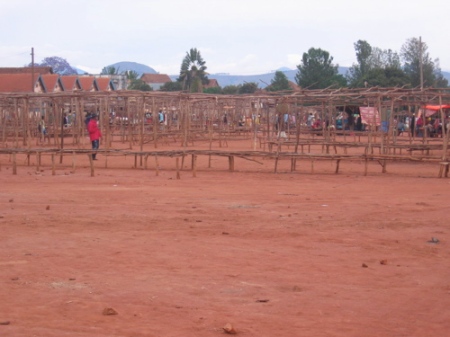
The Ambalavao Market which is overflowing with business on Wednesdays when the entire town and people from all over the area come here.
The factory was not really a factory as much as it was an open-air assembly line where women would take soaked dried papyrus, mix it artfully with dried flowers, and then press it against screen where it would dry into beautiful paper. They would then take the paper and make it into all sorts of things from pieces for framing to photo albums. This paper sells all over Madagascar and is frighteningly cheap for how gorgeous it is; stuff like that would sell here in some snobby specialty shop for a small fortune. I purchased an ample supply of this lovely paper, as did Mary and Allison, and then we were set to go back on the town, this time joined by Randall.
As we walked through the streets, we came across Christine. As we drifted through the town, we noticed we were causing quite a stir – the people were following us and watching our every move. They appeared to be as interested in us as we were in them! The children ran alongside us, women in beautiful hats strolled close to us, men pulling pousse-pousses full of children slowed as they noticed us, the children in back turning around and waving.
Three smiling women who had been walking near to us throughout our stroll stopped and posed for us, smiling with mouths full of gold teeth. Mary and Allison stopped at a Hotely to purchase snacks for their nightly card game; Randall got a cassis (black currant) Fanta (he had become addicted to the syrupy concoction) and I got a big, fat Coca-Cola.
Christine was snapping pictures throughout our walk. We came across a man lounging on the hood of a burnt-out car and she asked him if it would be all right to take pictures. He and his friends eagerly accepted, posing appropriately, and then he rushed over excitedly, asking Christine if she would take his address and send him copies of the pictures she had taken. She gladly accepted.
We strolled through the Ambalavao market which was pretty empty. We passed through the open-air section and had gotten to stalls in which people were selling all sorts of foods from dried vegetables to revolting fly-caked meats when I noticed that Christine had been ambushed by a huge group of leaping children after taking pictures of a few of them. She seemed distressed by the jocular imps, but finally broke free and caught up with us.
We made it back to our hotel and settled in for a weird hybrid game of solitaire that is played with more than one person (I never understood it). As Jill, Mary, Allison, and Christine slapped cards down in a frenzy, I made sure the stacks remained organized, all the while guzzling Cristal sparkling water.
After the card game, we had a lovely dinner and then went to bed. The next morning, we would be up and at ’em to go to Aranja, where we would finally meet up with those ring-tailed lemurs made so famous by that dumb cartoon.
